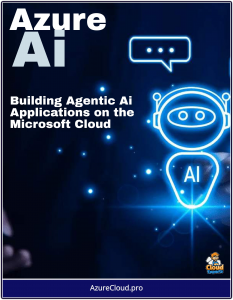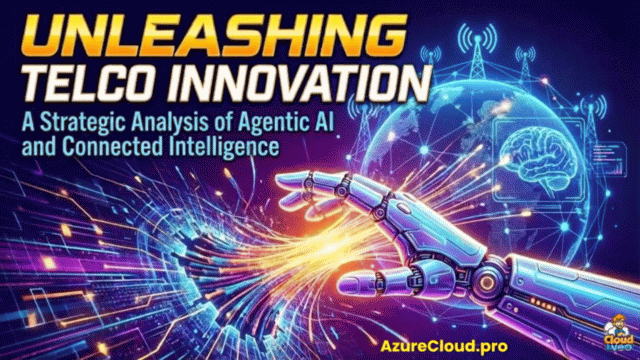Azure AI Foundry integration in GitHub
Azure AI Foundry in GitHub is enabling developers to bring AI applications into production, offering tools for model customization, agent building, and responsible AI evaluation.
 Azure AI Foundry’s integration with GitHub streamlines AI development by embedding powerful AI tools directly into the GitHub ecosystem, where millions of developers already collaborate.
Azure AI Foundry’s integration with GitHub streamlines AI development by embedding powerful AI tools directly into the GitHub ecosystem, where millions of developers already collaborate.
This integration accelerates the AI development lifecycle, from model exploration to production deployment, by leveraging GitHub’s collaborative platform and Azure’s robust AI capabilities.
Overview of Azure AI Foundry and GitHub Integration
Azure AI Foundry is a comprehensive platform for designing, customizing, and deploying AI applications, including multi-agent systems. Its integration with GitHub brings AI capabilities directly into developers’ workflows, enabling seamless experimentation, collaboration, and deployment.
This integration is particularly valuable for building multi-agent systems, where multiple AI agents collaborate to perform complex tasks, such as those demonstrated in the retail scenario from Chapter 1 (e.g., handling customer queries, processing orders, and generating analytics).
Key aspects of the integration include:
- Model Exploration and Testing: Developers can access Azure AI Foundry’s catalog of over 1,900 models (e.g., Grok 3, DeepSeek R1, Hugging Face models) directly through GitHub’s interface, such as the GitHub Models playground, to test and evaluate models for free before deploying them to production.
- Code-First Development: Azure AI Foundry integrates with GitHub’s code repositories, allowing developers to manage AI prompts, code, and agent workflows as versioned artifacts in repositories, using tools like .prompt.yml files for prompt versioning.
- CI/CD Pipelines: GitHub Actions and Azure DevOps integrate with Azure AI Foundry to support continuous integration and continuous deployment (CI/CD) for AI applications, enabling automated testing, deployment, and monitoring of multi-agent systems.
- Retrieval-Augmented Generation (RAG): Developers can experiment with RAG by uploading data directly in the GitHub Models playground, which provisions an Azure AI Search index for free, enhancing multi-agent systems with context-aware responses.
- Community and Collaboration: GitHub’s collaborative environment, combined with Azure AI Foundry’s community resources (e.g., Discord, GitHub repositories), fosters teamwork and knowledge sharing for building complex AI systems.
How the Integration Works
Accessing Models via GitHub Models:
Developers can explore and test AI models in the GitHub Models playground, which is rate-limited but free for experimentation. Models like gpt-4o-mini, Grok 3, and DeepSeek R1 are available, supporting tasks like text generation, image processing, and agentic workflows.
To use a model, developers select it in the playground, generate a free API key, and test it with sample inputs. For production, they can upgrade to an Azure subscription and deploy the model to Azure AI Foundry without changing their code.
Example: For the multi-agent retail system from Chapter 1, a developer could test Grok 3 for the QueryAgent in the GitHub Models playground to evaluate its conversational performance before integrating it into the workflow.
Versioning AI Prompts and Code:
GitHub allows developers to version AI prompts and agent logic as code, using .prompt.yml files. This enables tracking changes to agent prompts (e.g., the QueryAgent’s prompt for handling customer inquiries) in pull requests, ensuring consistency and collaboration across teams.
Example: In the retail system, the handle_query function’s prompt (“Respond to the customer: {customer_input}”) can be stored in a .prompt.yml file, versioned in a GitHub repository, and reviewed by team members before deployment.
Building and Deploying with GitHub Codespaces:
GitHub Codespaces provides a cloud-based development environment for running Azure AI Foundry projects. Developers can clone repositories like Azure/ai-foundry-workshop or Azure-Samples/get-started-with-ai-agents to build and deploy multi-agent systems.
These repositories include sample code and Jupyter notebooks for hands-on exercises, such as deploying the retail system’s agents (QueryAgent, OrderAgent, AnalyticsAgent) using the Azure AI Foundry SDK.
Example: A developer can use GitHub Codespaces to run the retail system code from Chapter 1, deploying it to Azure Container Apps for scalability, as shown in the Azure-Samples/get-started-with-ai-agents repository.
RAG Integration for Contextual Agents:
Azure AI Foundry’s RAG capabilities are accessible via GitHub, allowing developers to upload data to the GitHub Models playground and create an Azure AI Search index for free. This enhances multi-agent systems by grounding responses in enterprise data.
Example: In the retail system, the QueryAgent can use RAG to retrieve product information from an Azure AI Search index, improving response accuracy for customer inquiries like “What’s the price of item1?”.
CI/CD with GitHub Actions:
GitHub Actions integrates with Azure AI Foundry to automate the deployment of multi-agent systems. Developers can set up pipelines to test, deploy, and monitor agents, incorporating safety checks like Azure’s AI Red Teaming Agent.
Example: For the retail system, a GitHub Action could automate the deployment of the RetailWorkflow from Chapter 1, running tests to validate agent interactions and deploying to Azure with reserved capacity for scalability.
Monitoring and Observability:
Azure AI Foundry’s observability features integrate with GitHub for real-time monitoring. Developers can view metrics like latency and throughput in the Azure AI Foundry portal and trace agent performance using Azure Monitor and Application Insights, accessible via GitHub-hosted projects.
Example: The retail system’s performance (e.g., QueryAgent’s response time) can be monitored using the Tracing feature in the Azure AI Foundry portal, with logs stored in a GitHub repository for team review.
Benefits for Multi-Agent Systems
The integration enhances the development of multi-agent systems, such as the retail example from Chapter 1, in several ways:
- Rapid Prototyping: Developers can test agent logic in the GitHub Models playground before integrating it into the Azure AI Foundry Agent Service, reducing development time.
- Collaboration: GitHub’s version control and pull request system enable teams to collaborate on agent definitions, prompts, and workflows, ensuring alignment across the QueryAgent, OrderAgent, and AnalyticsAgent.
- Scalability: Upgrading from GitHub Models to Azure AI Foundry Models allows developers to deploy agents to production with minimal code changes, supporting high-throughput scenarios like processing 100 trillion tokens quarterly.
- Responsible AI: GitHub-hosted projects can incorporate Azure’s safety tools, such as the AI Red Teaming Agent, to test multi-agent systems for vulnerabilities, ensuring ethical and secure operation.
Conclusion
Azure AI Foundry’s integration with GitHub transforms AI development by bringing model exploration, collaboration, and deployment into a single, developer-friendly ecosystem. For multi-agent systems, this integration enables rapid prototyping, seamless data integration with RAG, and robust CI/CD pipelines, all while leveraging GitHub’s collaborative features.
By meeting developers where they work, Azure AI Foundry empowers teams to build intelligent, scalable, and responsible AI applications, as demonstrated by the retail system in Chapter 1. Start exploring this integration today to unlock the full potential of AI-driven innovation.



